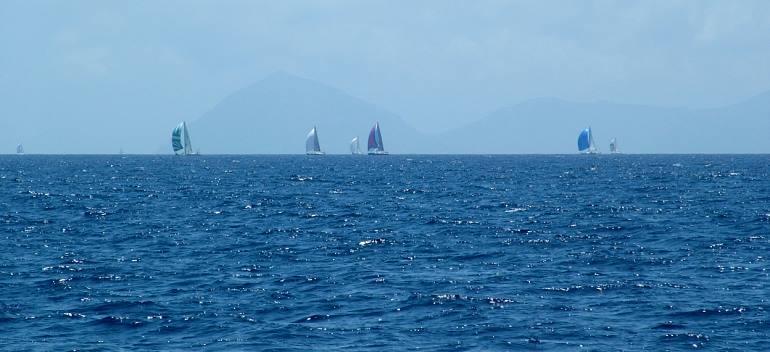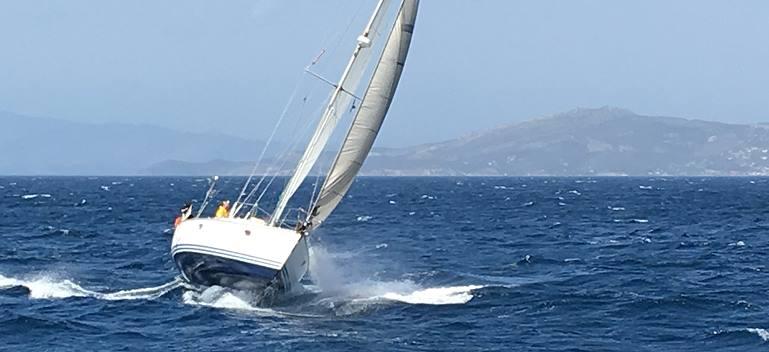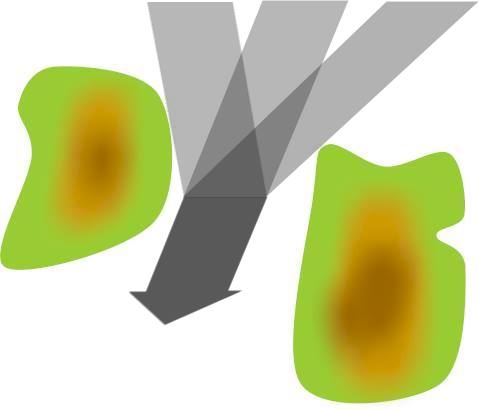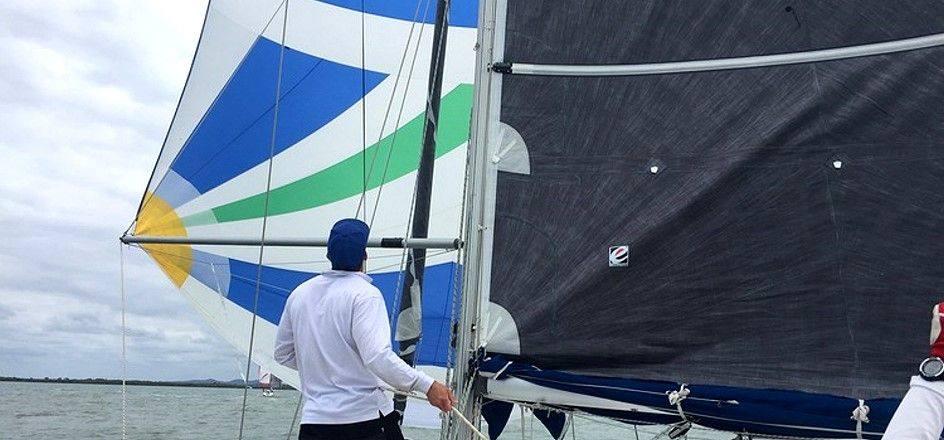Mastering the wind
SECRETS OF SAILING PERFORMANCE
In the world of sailing, there are intricacies known only to those who navigate the open waters.
In fact, most secrets are familiar only to those involved in offshore sailing competitions.
These secrets involve harnessing the power of the wind in ways that escape the casual observer.
While most people get to sail occasionally, for dedicated sailors, these secrets are the essence of their skill.
In this article, our focus will be twofold:
- exploring the art of utilizing the appροpriate winds to enhance sailing performance, and
- understanding how this knowledge contributes to safety, steering clear of places where the wind strengthens unexpectedly.
Let's uncover these mysteries and understand how the wind becomes more than just a force of nature; it becomes a partner, a guide, and a source of endless fascination for those who sail.
CHARTING THE BREEZE
With a solid understanding of weather phenomena (local winds, katabatic winds and seasonal air currents, we can harness these winds intelligently.
This allows us to navigate skillfully, utilizing our sails to their full potential, all within the carefully planned conditions we've envisioned, in fact tactics employed by competitive sailing crews.
1️⃣ Signals from fellow seafarers

During the summer months, Greek waters are bustling with sailboats, making it easy for sailors to gather valuable wind information by observing other vessels.
Pay close attention to the direction and speed of nearby boats
;their sails can reveal the presence of strong winds or wind pockets.
2️⃣ Reading the Skies

Looking at the water you will see the surface ruffle when a gust comes through.
Where there is a frontal system coming through you will be able to see a wall of clouds form below the main clouds from a few miles off.
This is potentially a sign of a squall coming through and it is better to put a reef in long before it passes overhead.
In bigger winds you may see "white horses" forming with the tops being blown off the waves as spume.
Again, keep an eye out for groups of these and how far they extend as the presence of these will predict more exciting winds and perhaps a need to reef.
And Again: Always observe the sea surface for ripples and dark patches, as these indicate areas with more wind
3️⃣ Decoding terrain dynamics for sailors
The terrain significantly influences wind patterns.
* Mountains cause winds to twist and turn, creating turbulent patterns.
Winds change speed and direction as they encounter mountainous terrain.
* Valleys act as accelerators, speeding up winds as they funnel through the narrow passages.
Winds become swift and energetic, creating dynamic airflow within valleys.
* Coastal Lines contribute to diverse wind patterns due to varying land and water temperatures.
Understanding these interactions is vital for sailors and wind enthusiasts, allowing them to navigate the intricate choreography of nature's windy ballet.
The wind gains speed as it travels over mountain ridges, where it cools down and descends with greater force on the leeward side of the islands.
This phenomenon explains why powerful winds are frequently encountered on the sheltered side of an island.
When attempting to harness these winds, it's crucial to steer clear of approaching steep coastlines.
In such areas, the descending wind forms whirlwinds, posing potential risks for any activities conducted in close proximity.
Understanding these natural patterns is essential for safe navigation and effective utilization of wind energy resources.
🔵 Local Winds
Local winds are often predictable and can have a significant impact on the weather conditions of the area where they occur.
They can vary in strength and direction based on the time of day, the season, and the specific geographical features of the region.
Some common examples of local winds include sea breezes, land breezes, valley breezes, and mountain winds.
Sea breezes and land breezes, for instance, occur due to the temperature difference between the land and the sea.
During the day, the land heats up faster than the sea, creating a low-pressure area over the land.
Cooler, high-pressure air from the sea moves in to fill this low-pressure area, creating a sea breeze.
At night, the situation reverses, and a land breeze develops.
Meltemi wind occurs daily, becoming a dependable guide for sailors, shaping their sails and guiding them through the azure waters of the Aegean.
This local weather phenomenon, combined with broader meteorological understanding, is the essence of a sailor's weather wisdom.
Understanding local winds is crucial for activities such as sailing, as they can affect navigation and weather conditions in specific coastal regions.
🔵 Katabatic winds
Katabatic winds, also known as downslope winds, are created when air moves downhill due to the force of gravity.
These winds occur when the ground cools down rapidly, causing the air in contact with it to also cool. As the air cools, it becomes denser and heavier, flowing downhill into valleys or other lower elevations.
The typical wind speeds of katabatic winds can vary widely depending on the specific geographical features of the area and the temperature differences between the higher and lower elevations.
However, these winds can often reach speeds of 50 to 60 miles per hour or even higher in some cases. The strength of katabatic winds can make them a significant factor in local weather patterns and can impact sailing and other outdoor activities in affected regions.
🔵 Navigating the Island's Edge for Maximum Wind Power

When the wind meets the terrain, it veers about 30º (corner effect) to the left (due to friction), and to strengthen.
This implies that for a more wind-filled sail, choosing a passage closer to the leeward side of the island is advisable.
Conversely, opting for the windward side results in a calmer journey.

Passages between two islands also promise amplified winds.
In fact, the gap between the islands can act like a funnel, generating intensified winds.
This natural phenomenon transforms the channel between the land masses into a wind tunnel, creating a sailing experience marked by powerful and consistent breezes.
Navigating these strategic routes not only offers a thrilling adventure but also ensures a steady flow of wind to propel the sails, making the journey both exciting and efficient.
4️⃣ Getting the best out of the wind
🔵 Main Sail
Certainly, before raising the main sail, it's essential to confirm that
- the reef lines are unblocked, and
- the boom vang is released and free for movement.
While hoisting the main sail (using the halyard) the sail goes up, unfolding evenly.
Check the sail slides to ensure they are moving smoothly along the mast track.
🔵 Telltales
Sometimes referred to as "woolies", they serve as visual indicators of the airflow around the sail and are crucial to optimize sail trim and performance, by adjusting the sail trim until both windward and leeward telltales flow correctly.
Constantly monitoring these telltales and making small adjustments is key to maximizing the sail's performance and the boat's speed.
▪️If you doubt, let it out
Are you uncertain about the mainsail trim?
Release it slightly and then adjust until the telltales are flying smoothly.
The "cooperation" between the Genoa and mainsail is crucial for balanced forces, steering control, optimal sail shape, adaptability to wind conditions, and efficient upwind performance in sailing.
According to the Kavas Yachting Greek yacht charter sailing guide:
“When sailing on an upwind leg - the telltales on both the windward and leeward side of the jib should point aft. If the leeward telltales twirl, the helm should steer closer to the wind. If the windward telltales lift and twirl, the helm should head slightly downwind.”
Enjoy!
One of the most common reasons for going sailing is that it is just you Nature working in harmony.
Nature can be a fierce beast but if she is watched carefully then you can harness her to have the best possible time afloat.
There will be times on your Greek yacht charter when you and your crew don’t feel comfortable.
Speaking after a very windy day on the Americas Cup racing course in Bermuda, Team BAR skipper Ben Ainslie was asked if he enjoyed it? He explained, “I wouldn’t say it was enjoyable, but I would say it was exhilarating!”
Most of the time if you read the winds right you will find it enjoyable – only some of the time you will find it exhilarating.


